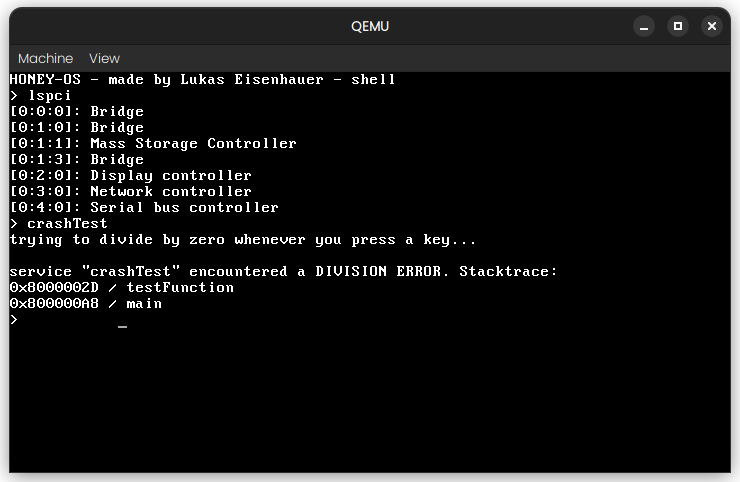
 GitBucket
GitBucket
tree os v2
| rootfs/boot/ grub | 2 years ago | ||
| src | 1 year ago | ||
| .clang-format | 2 years ago | ||
| .gitignore | 2 years ago | ||
| LICENSE | 2 years ago | ||
| Makefile | 1 year ago | ||
| README.md | 1 year ago | ||
| compile_flags.txt | 2 years ago | ||
| dependencies | 1 year ago | ||
| honey-os.png | 2 years ago | ||
| honey-os.sfdisk | 1 year ago | ||
| link.ld | 1 year ago | ||
Honey OS

Honey os is an operating system developed by me. Its main goals consist of learning about x86 architecture and os development as well as ensuring good readability and easily understood code.
Building
To build the OS and run in an emulator, run
make
The ´dependencies´ file contains a list of AUR packages that should be installed when runnung Honey-OS. To install them all, user your package manager (paru in this instance) like this:
cat dependencies | paru -S -
Directory structure
The rootfs directory contains all files for the 'root file system' of the final iso. It contains the final honey os kernel executable file as well as necessary grub configuration files.
The initrd directory will be created during the building process as a temporary directory. This is later packed into a .tar file and will be loaded by grub. After booting, the kernel will be able to load additional user mode programs from this 'initial ramdisk', before other file system drivers have been initialized to load programs from the boot drive.
src/kernel contains all files which are compiled into the finished kernel.
src/userland contains several directories with source files to compile different ELF user programs.
src/userland/hlib is the honey OS utility library. It is linked by default with all loaded user mode programs at a high memory address (0xFF000000). And can be linked with and assumed to be loaded by any other program, because it will be loaded first.